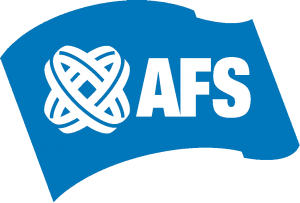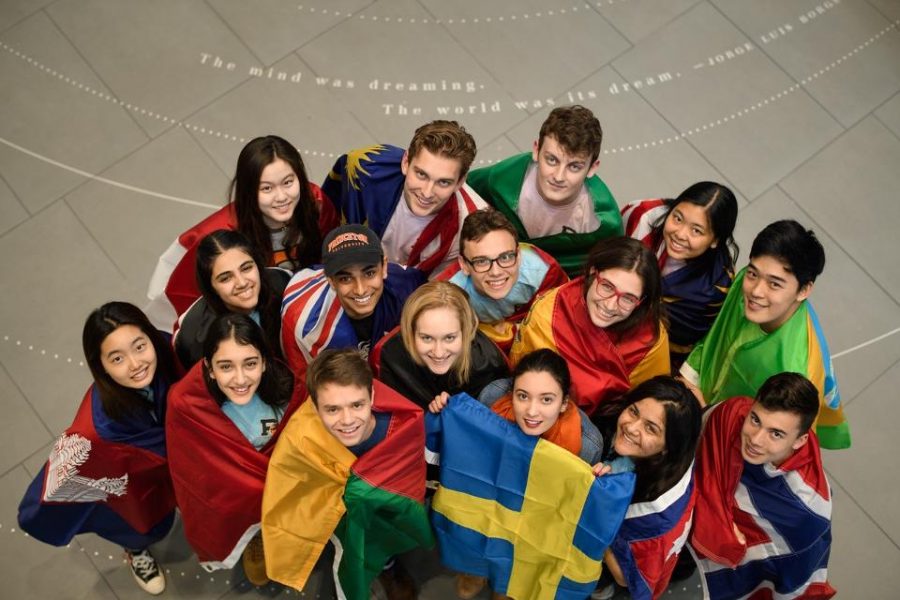Exchange Students and Study Abroad Students
What are the differences between a foreign exchange student and a student studying abroad?
May 3, 2019
Most people have heard the two terms “international student” and “foreign exchange student” but don’t know that they are completely different. International students go to university internationally and acquire citizenship while there. Foreign exchange students are high school level students and are more involved with the institution. International students and exchange students have to acquire a visa before going out of the country.

The type and how to apply for a visa varies depending on where the student wants to study. It takes about 4-6 weeks before a person can get their visa.
Packing to go overseas is always difficult, especially if you are going somewhere where the climate is totally different. The most important thing a student needs to carry with them is identification documents. For example, a visa and passport. Packing the right clothes can be hard because one might not know the climate they are entering. So, here’s how to dress to go overseas. Northern Hemisphere is most of Eastern European and Northern America and a person should wear winter clothing. If going to the Southern Hemisphere, bring summer clothes, especially around the equator. Lastly, if going to Western Asia or the United States, bring a variety of different weather clothing. The temperature changes are dependent on the season.
Airports nowadays are strict on what travelers can and can’t bring on airplanes. Here are some things that can carry on a plane: a laptop and a phone to listen to music or watch movies. No need to bring a lot of food because they feed you food on the plane. Bring a book or coloring book or book to read. Most stores make travel size coloring book. Instead of bringing colored pencils or markers, bring crayons. Pencil sharpeners are normally not allowed through security and markers could bleed while inside your bag.
International students hold the flag of the country they study in.
Crossing the Big Pond
Becoming an international student is not simple. It depends on where you are going and what you want to become. Universities have requirements that we do not have in the USA. Some of the requirements are that you have to take an English test, even though we speak English. Then there will also be a different speaking language test you’ll have to take. Britain has four different English tests that we do not have over here. One major test you have to take is IELTS (Academic), which is a listening, reading, speaking and writing a test. They also have other tests, but we do not provide them in the USA.
As an international student, you have to have certain things with you at all times. One major thing that you have to carry at all times is your passport and visa together. If you do not have that on you, you could get in trouble. Your visa is what shows why you are there.
Below is the process of becoming involved in international study:
The first steps are to choose a college or university. Then you need to figure out how to apply. In England, UCAS is a website where they have all colleges and classes to choose from. UCAS has a 40 dollar fee for the whole year to use it and you’re able to apply for scholarships there as well.
The second step is to apply and apply for scholarships. They will be getting in touch with you and telling you that you’re missing through a letter. It will tell you what you need to send them and that you been accepted into that school. Some schools will give you scholarships because of the classes you are taking. It depends on the classes you have and how many scholarships you apply for overseas.

The third step is to send a picture of your passport to the school you’re going to. They will be notifying the border control and Homeland Security. They will be running background checks after you apply for your visa. When you’re about to go into the country, you get a stamp saying you have a visa on your passport.
The final step is to get to the country. You may be able to drive or you may have to fly. Just be sure to bring your clothes and items that you need. When you get there, there will be a school supervisor or campus kid who will pick you up. They will have apartments for you to stay at but you need to sign papers for your stay.

Every country you could study in. Photo credit: WACO.
Getting Schooled in a Foreign Place
Do you know what a foreign exchange student is? The definition of a foreign exchange student, according to dictionary.com, is a person who goes to a foreign country or location in order to undertake learning and schooling while a student from that country or location attends a school in the first country. First, the student has to find a country that they are interested in going to school at a high school level. After that, the student has to figure out a program they can join and afford. Some programs students could join are: AFS, Youth for Understanding, and CIEE.

According to a blog, AFS has programs in over 50 countries including Canada, New Zealand, France, and Japan. You can either go for a year or a few months. To participate in this program, the student must submit an application which includes a letter of recommendation and a doctor’s form. They must also complete an in-home interview with an AFS volunteer. To apply for this program, teens must have at least a 2.8 GPA, and depending on the country, may need to have language fluency. More information here:https://www.afsusa.org/

Youth for Understand or YFU offers students ages 15-18 the opportunity to study abroad for a year, a semester, a summer, or through another specialty program like sports or theater-focused program. Students can choose countries like Argentina, Australia, Austria, Belgium, Brazil, Bulgaria, Chile, China, and 35 other countries throughout the world. Most destinations don’t require the student speaks the language, and students may even get the opportunity to stay with a host family that speaks English. More information here:https://www.yfuusa.org/

CIEE offers places for students in about 40 different countries, including Germany, Chile, France, Ireland, Japan, Spain, and New Zealand. This program requires students to attend pre-trip orientation sessions and hosting an in-country orientation once students arrive. The company also tries to book students traveling to the same country on the same flight to help them enjoy the experience together and make it less stressful. Once abroad, students connect with local coordinators who make regular visits and help during emergencies. More information here:https://www.ciee.org/
In Woodford County, it is simple to become a foreign exchange student. To be one here students need to find a host family to live with. A host family is a family who takes care of a foreign exchange student(s).

This district has a document called Admission of Foreign Exchange Students. This document provides all the information on how to be accepted into our school. If a student wants to view the full document they will have to see the principal or someone from Central office.
The main points of the document are stated as follows:
- “International exchange program students, immigrant foreign students, immigrant foreign studies and nonimmigrant students without I-20 status as residents of the school District. All such students shall be enrolled in the appropriate school.”
- “The agency shall provide written evidence that the student has not graduated high school, is eligible to be enrolled in Grades 9-11 and less than eighteen (18) years of age as of July 1 of the year the student wishes to enroll.”
- “The student shall furnish a certified English translation of his academic record and the original or copy of the original in the native language.”
- “All organizations/agencies seeking to place foreign exchange students with District shall participate in an interview, be accepted by the District as an approved organization and shall sign an agreement outlining the District’s expectations for the student and the organization.”
- “All exchange students shall have a host family who shall be responsible for the student’s academic and home life. The local host family shall serve as a support service to the student, family, and school.”
- “Students are permitted to participate in an exchange program if they are high school students, they have not graduated or they are less than eighteen (18) years of age on July 1 of the year they wish to enroll.”
- “Exchange programs shall not exceed a full school year.”
- “All foreign exchange students shall be enrolled as a junior and will be admitted with nongraduate status. They shall be enrolled as juniors but will not be placed in class ranking. They shall be allowed to enroll in classes of their choice as long as they enroll in a core curriculum and the classes are below the maximum state limit of 31.”
- “All students’ entrance shall be approved prior to the first student day of a school year.”


